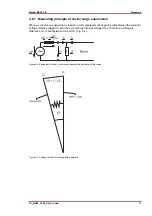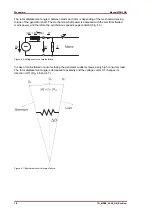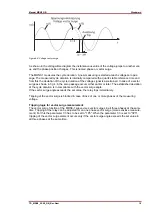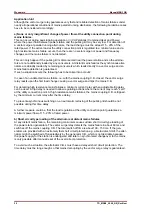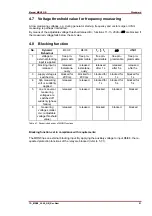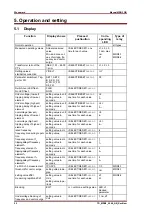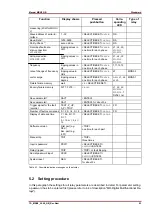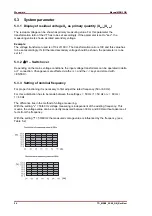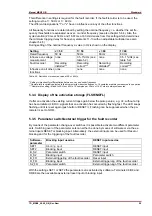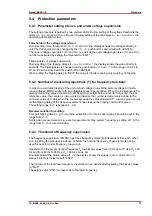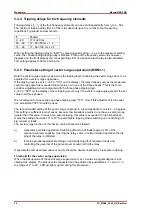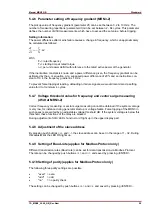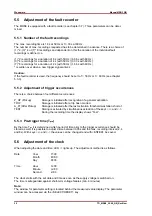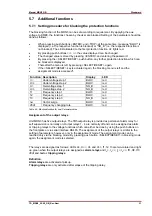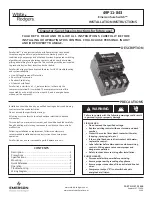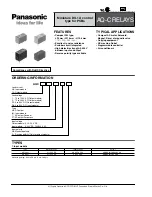
Woodward
Manual MRN3 GB
16
TD_MRN3_09.08_GB_Rev.New
4.6 Vector surge supervision (MRN3-1)
The vector surge supervision protects synchronous generators in mains parallel operation due to
very fast decoupling in case of mains failure. Very dangerous are mains auto reclosings for syn-
chronous generators. The mains voltage returning after 300 ms can hit the generator in asynchron-
ous position. A very fast decoupling is also necessary in case of long time mains failures. Generally
there are two different applications:
a)
Only mains parallel operation no single operation: In this application the vector
surge supervision protects the generator by tripping the generator circuit breaker
in case of mains failure.
b)
Mains parallel operation and single operation: For this application the vector surge
supervision trips the mains circuit breaker. Here it is insured that the gen.-set is not
blocked when it is required as the emergency set.
A very fast decoupling in case of mains failures for synchronous generators is known as very diffi-
cult. Voltage supervision units cannot be used because the synchronous alternator as well as the
consumer impedance support the decreasing voltage.
For this the mains voltage drops only after some
100 ms below the pickup threshold of voltage supervision relays and therefore a safe detection of
mains auto reclosing is not possible with this kind of relay.
Frequency relays are partial unsuitable because only a highly loaded generator decreases its
speed within 100 ms. Current relays detect a fault only when short-circuit type currents exist, but
cannot avoid their development. Power relays are able to pickup within 200 ms, but they cannot
prevent power to rise to short-circuit values too. Since power changes are also caused by sudden
loaded alternators, the use of power relays can be problematic.
Whereas the MRN3-1 detects mains failures within 60 ms without the restrictions described above
because they are specially designed for applications where very fast decoupling from the mains is
required.
Adding the operating time of a circuit breaker or contactor, the total disconnection time remains be-
low 150 ms. Basic requirement for tripping of the generator/mains monitor is a change in load of
more than 15 - 20% of the rated load. Slow changes of the system frequency, for instance at regu-
lating processes (adjustment of speed regulator) do not cause the relay to trip.
Trippings can also be caused by short-circuits within the grid, because a voltage vector surge
higher than the preset value can occur. The magnitude of the voltage vector surge depends on the
distance between the short-circuit and the generator. This function is also of advantage to the
Power Utility Company because the mains short-circuit capacity and consequently the energy
feeding the short-circuit is limited.
To prevent a possible false tripping the vector surge measuring can be blocked at a set low input
voltage (refer to 5.4.7). The under voltage lockout acts faster than the vector surge measurement.
Vector surge tripping is blocked by a phase loss so that a VT fault (e.g. faulty VTs fuse) does not
cause false tripping. When switching on the aux. voltage or measuring voltage , the vector surge
supervision is blocked for 5 s (refer to chapter 4.8).
Note:
In order to avoid any adverse interference voltage effects, for instance from contactors or relays,
which may cause over functions, MRN3-1 should be connected separately to the busbar.
















